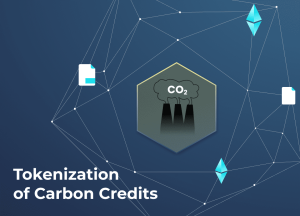Carbon Credits
If we’re going to limit the rise of global temperatures to 1.5 degrees Celsius, companies and individuals will need to drastically reduce their greenhouse gas emissions. Many will have to adopt new technologies, energy sources, and operating practices to reach net zero—or even nullify all their previous historical emissions by purchasing carbon credits. That’s where the voluntary carbon market comes in, where individuals and organizations can purchase credits to offset their own emissions from projects that are independently verified to be reducing greenhouse gas levels.
A carbon.credit is a permit that represents one metric ton of carbon dioxide removed from the atmosphere through a project that’s certified to meet certain environmental and social standards. These projects are often forestry-based, aiming to create alternatives for people who would otherwise cut down trees, which helps to address the problem of deforestation while also reducing carbon dioxide levels. The carbon credits are traceable, tradable and finite: They can only be used to offset emissions once, and they’re retired forever upon purchase by the buyer. Some of the most ambitious companies have pledged to be carbon negative or even nullify all their previous emissions by using these markets. Software giant Microsoft, for example, plans to be carbon negative by 2050.

Voluntary carbon markets operate largely unchecked by federal or local regulators, but they’re subject to the oversight of a few respected standards organizations that verify the quality of credits. They’re also not restricted by the geographic limitations of compliance markets, such as the emissions trading scheme backed by international airlines called CORSIA.
Are Carbon Credits Still Working?
Currently, buyers of carbon credits link supply and demand through private conversations and over-the-counter trades, but some exchanges are starting to emerge. The largest are CBL, a New York-based carbon marketplace, and Singapore’s AirCarbon Exchange. These exchanges offer standardized products for forward delivery, which traders and financial players use to manage price risk and signal demand to suppliers. The exchanges also help settle large bilateral deals negotiated offscreen.
But the exchanges aren’t capturing the full range of demand signals. For example, there’s a growing chorus from consumers that they want to support projects that provide additional co-benefits beyond GHG reduction, such as providing local communities with alternative livelihoods, improving water quality, or reducing economic inequality. These types of projects may not produce as many credits as the GHG-reduction ones, and they might be harder to certify, which could make them more difficult to access.
As the market for carbon credits grows, it’s important to ensure that it’s operating effectively. To address some of the challenges, stakeholders from across the market—including standard-setting organizations, financial institutions, and providers of market-infrastructure services—should take steps to create clearer demand signals that can drive liquidity and scale in this vital market. This would be an important first step toward making achieving net zero possible. McKinsey is collaborating with other market participants to examine these and other issues in a new report, “Anatomy of a Carbon Credit,” that will be published this fall.